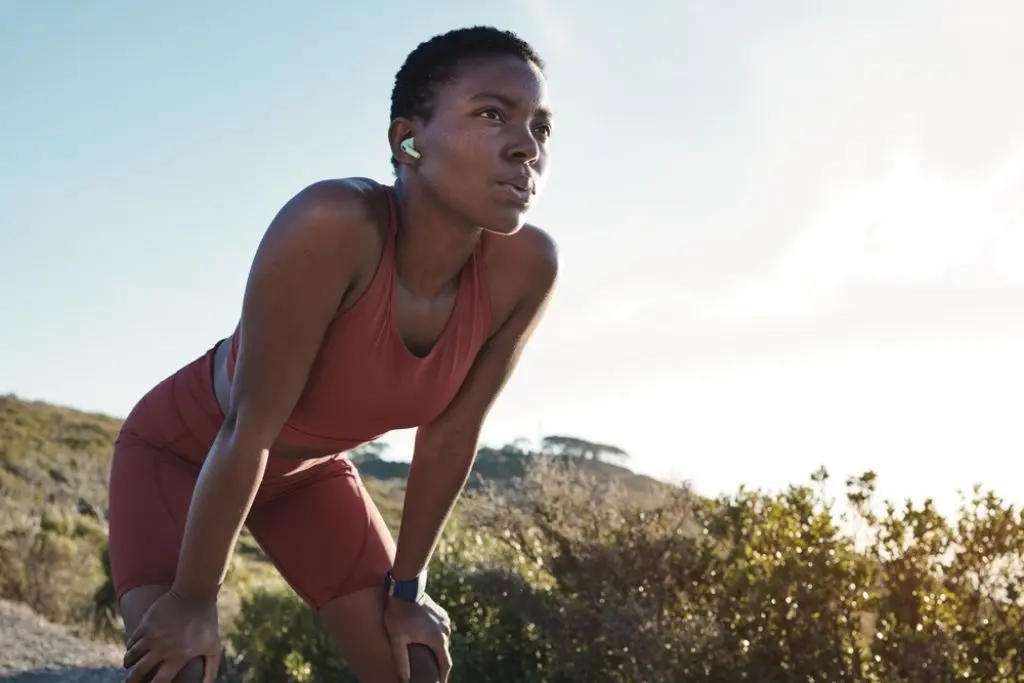Should You Do Cardio Before Or After Weights?
It all starts with knowing what you want to get out of your workout.

February 3, 2023 - Updated January 14, 2025

Finding time during your week to exercise can be enough of a challenge at times, let alone getting the right balance between cardio and strength training. On those days when you want to squeeze in a great workout but suddenly realise how little time you have, it’s normal to wonder - should I do cardio or weights first?
You also might have the same question if you’re someone who has ambitious fitness goals (or a day to yourself and plenty of energy to burn) and you’re looking to smash out some cardio and weight training on the same day.
Although there is some science around how these two different training styles can influence each other when paired together - which we will get into - the key to answering this question is more about knowing what your individual goals are.
Let us explain.
Can you combine cardio with weights?
Absolutely! A combination of cardio and strength training makes for a challenging cross-training workout, which often falls into the category of HIIT (high-intensity interval training) or HIRT (high-intensity resistance training). Ruba Ali’s Thrive program is an epic mix of moves that will challenge your muscles and your heart rate if that’s what you’re looking for!
This style of workout can be incredibly efficient, effective and a whole lot of fun if you want to boost your cardio fitness and muscular strength at the same time.
If you’re not familiar with what cardio and strength training means, cardio refers to cardiovascular exercise or aerobic training that elevates your breathing and heart rate, such as running, power-walking, dancing, hiking, cycling, or interval training. Strength training refers to exercises that aim to increase the strength and/or size of your muscles by working against resistance - whether that be the resistance of your bodyweight or added resistance of equipment and gym machines. Both have their unique benefits, are fantastic for your health and should be included in a well-rounded exercise routine.
For those aged between 18 and 64 years, the CDC recommends at least 150 minutes a week of moderate-intensity activity alongside at least two days a week that include strength training exercises.
Alongside Ruba’s program, you’re spoilt for choice in the Sweat app when it comes to programs that fit the bill, including all of Kayla Itsines’ high-intensity programs, FIERCE with Chontel Duncan, High Intensity Strength with Cass Olholm and HIIT with Monica Jones.
Can you do cardio and weights on the same day?
If you’re doing two cardio and strength training sessions separately or pairing them together, then yes, you can complete them on the same day, but there are a few things you’ll want to take into consideration to ensure you’re looking after yourself and getting the most benefit from your workouts. These may include your goals, energy levels, exercise schedule, rest days and where you’re at in your menstrual cycle.
Cardio or weights first? How to decide
For the most part, deciding whether you do cardio before or after weights should come down to your fitness goals, says the American Council on Exercise, as the order of activity can have an impact on your performance and results. Ultimately, you want to feel the most energised and fresh for the activity that will get you closer to your goal.
If your main goal is to build your cardio fitness…
Start with cardio. If you start with resistance training, chances are you’ll fatigue your muscles and have minimal muscular power and energy left in the tank to give your best effort and make progress in the cardio component.
Keep in mind, you can be chasing a cardio goal, yet on some days prioritise strength training. For example if you’re trying to improve your 5k time, focusing on weight training a few days each week will improve your running.
If your main goal is to build muscular strength or size…
Start with your weights session to ensure you have maximum energy and muscular power. One 2016 study found average power and velocity were both significantly reduced when resistance exercise followed aerobic endurance exercise, indicating that muscular performance is compromised after cardio. Another study from 2015 produced similar findings, concluding that aerobic exercise before strength exercises impairs your strength performance.
Getting the most out of your workout isn’t the only reason to start with strength if you’re doing heavy lifting, it also helps to reduce your risk of injury. You're far more likely to hurt yourself or compromise your form when lifting weights if you’re already fatigued or struggling to focus before a strength session.
If you don’t have a specific goal in mind but you want to reap the benefits of both…
A common recommendation is to alternate between cardio and strength training each day like Katie Martin does or start your session with the type of exercise you enjoy the least. This will ensure you get it done and out of the way, while having something to look forward to at the end! You could also try a HIIT program to experience a blend of the two.
If your goal is to lose weight…
Any movement can contribute towards this, so prioritise whatever you enjoy and will stick with long-term! For some people, the endorphin rush of cardio is what keeps them coming back for more, while for others it’s the satisfaction of lifting heavier weights.
For us, we will always encourage a balance of strength training and cardio to reap the incredible benefits of both. Losing weight also takes time and nutrition plays a key part, so focus on creating an exercise routine that makes you feel great.

If you only want to do a short period of cardio or have limited time…
Make cardio the focus of your warm-up before strength training! A good warm-up is essential to increase blood flow to your muscles and prepare your body for the workout to come, so why not squeeze in your cardio with 5-10 minutes of walking, jogging, rowing, cycling or skipping? For the HIIT lovers out there, one final sprint outside or on the treadmill can be an intense finisher to wrap up your workout.
If you’re doing two separate sessions in one day…
The same rules apply! Order them according to your energy levels and fitness goals. Schedule the workout that best aligns with your primary goal for when you feel your best. For example, if gaining strength is your focus, you might start your day with weights if that’s when you feel most energetic, or you might perform better in the evening when you’ve eaten and are well-hydrated. See how you feel and find the best time to work out for YOU.
A few other things to consider
If you’re planning on completing two exercise sessions in one day, such as a morning walk to tick off one of your weekly LISS sessions before heading to the gym after work, just remember to listen to your body. More isn’t always a good thing and overtraining is real!
When you’re under a lot of stress, feeling fatigued or your menstrual cycle has got you feeling low, don’t hesitate to dial it back and stick to one session, opt for something gentle like yoga, or have a complete rest day. You’ll feel better about it and come back even stronger.
Structuring your workout schedule can feel like a complicated math equation, especially when you’re juggling the demands of family, study or work, but it doesn’t have to be!
Should you ever wonder whether to start with cardio or weights, the main thing to ask yourself is, what is my main goal for today? And let your answer guide the way. If you’re exercising for general health and want a mixture of cardio and strength, finish your workout with the type of exercise you enjoy most, blend the two together, or separate your sessions completely. You’ll be well on your way to reaping the benefits of both!

Erin is a writer and editor at Sweat with years of experience in women's publishing, media and tech. She's passionate about the power of movement, and you can often find her on a yoga mat, a hike, a dance floor, in the ocean or the gym.
* Disclaimer: This blog post is not intended to replace the advice of a medical professional. The above information should not be used to diagnose, treat, or prevent any disease or medical condition. Please consult your doctor before making any changes to your diet, sleep methods, daily activity, or fitness routine. Sweat assumes no responsibility for any personal injury or damage sustained by any recommendations, opinions, or advice given in this article.
Fitness